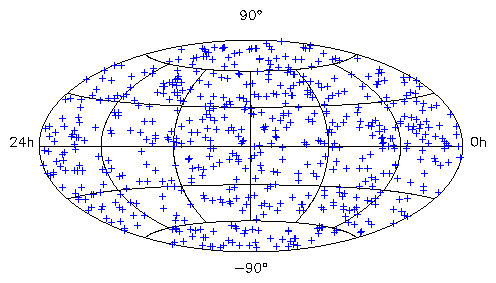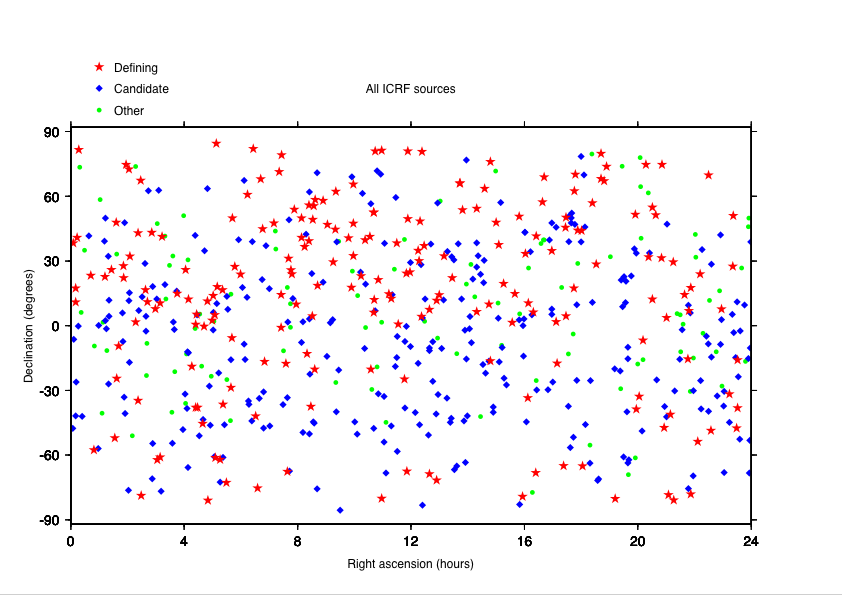The International Celestial Reference Frame: ICRF
The ICRS is materialized by precise
equatorial coordinates of extragalactic radio sources observed in Very
Long Baseline Interferometry (VLBI) programmes.
This first realization of the ICRF, although officially adopted in 1998, was
elaborated by the IAU Working Group on Reference Frame (WGRF) during 1995.
The IERS, jointly with the IAU Working Group on the Reference System and the IVS
are in charge of the maintenance of the conventional system and frame and of
its ties to other frames. A complete description of the ICRF, as well as the
procedures used for its elaboration, are given in the IERS Technical Note 23
(1997) and in Ma et al. (1998).
The ICRF contains J2000.0 VLBI coordinates of 608 extragalactic radio sources evenly
distributed on the sky. The radio positions are based upon a general
solution for all applicable dual-freqency Mark III VLBI data available through
the middle of 1995. Because of different observing histories and astrometric
suitability, the source positions estimated from the VLBI data analysis are
of varying quality. Thus the objects in ICRF are classified in three categories: defining,
candidate and other sources.
All |
List |

|
608 objects |

|
plotted with colors and markers. |
Defining |
List |

|
212 high-astrometric-quality objects, as far as the period of observations analyzed to build the frame is concerned. They define the ICRF axes. |
Candidate |
List |

|
294 sources, some have insufficient observations or duration
of observation to be defining, while others with many observations may have
larger than expected differences in position between catalog. They are
likely to climb up to the former category in the future. |
Other |
List |

|
102 sources with identified excessive position variation,
either linear or random. They are included for the sake of densifying the
frame or because they have contributed to the optical frame ties. |
ICRF catalog, from CDS, in
VO
(Virtual Observatory) format
Official and commonly used source
designations and
information on physical characteristics,
published in IERS TN 23, are provided. This information includes,
when known, the object type, redshift, 6 cm flux, 15 cm or 11 cm flux,
spectral index, V magnitude and a classification of spectrum for each source.




